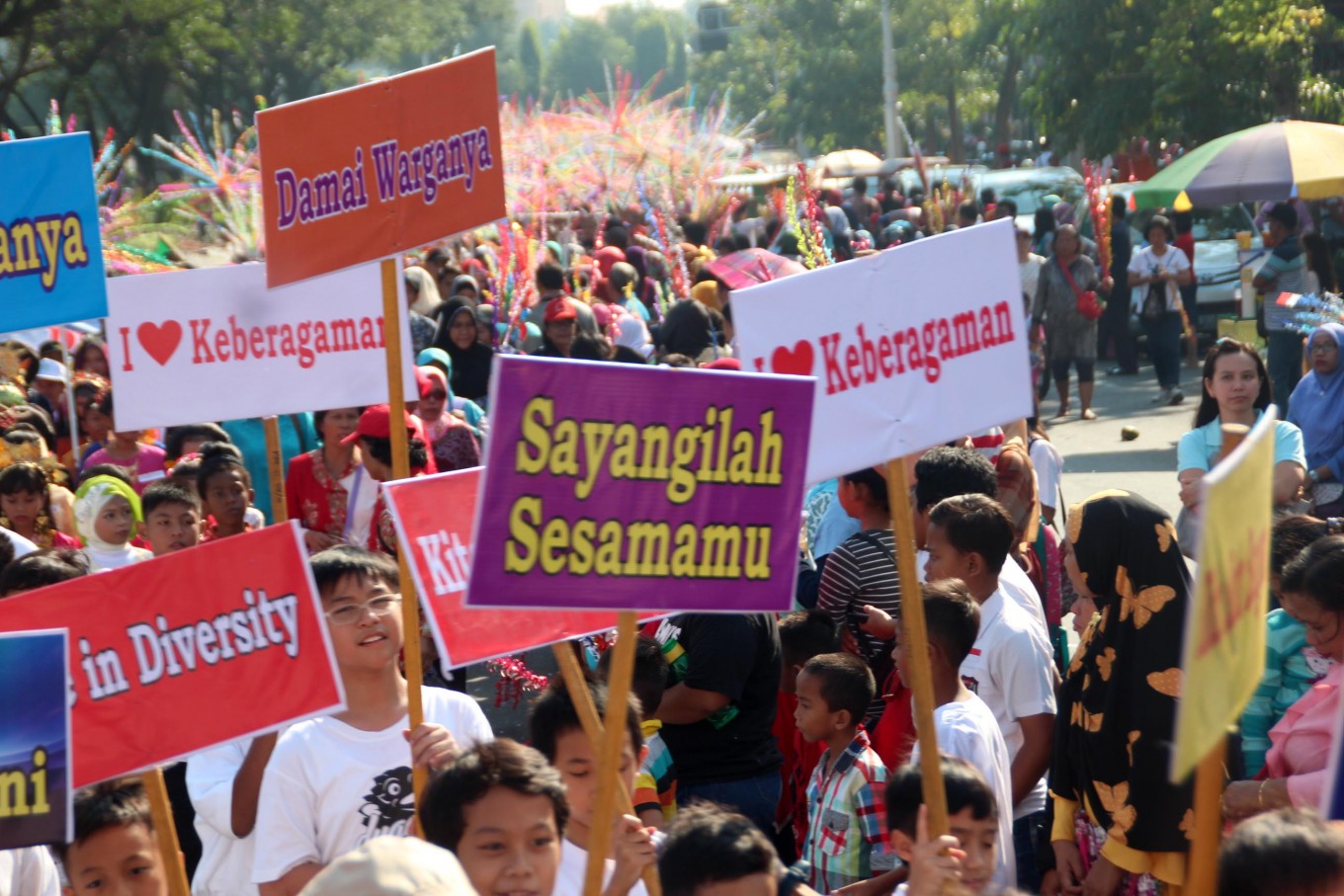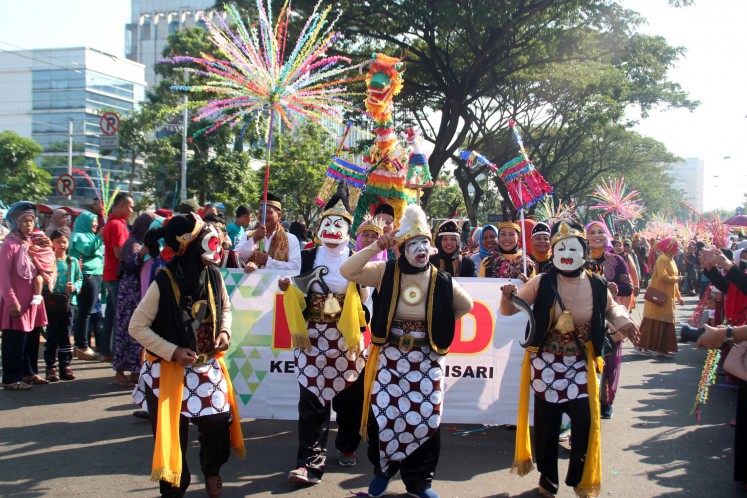Popular Reads
Top Results
Can't find what you're looking for?
View all search resultsPopular Reads
Top Results
Can't find what you're looking for?
View all search resultsSemarang welcomes Ramadhan with Dhugdheran carnival
Thousands of Semarang citizens in Central Java flocked to Jl. Pemuda on Tuesday afternoon, crowding the road from Town Hall to Kauman mosque to witness the Dhugdheran carnival, a tradition to welcome the holy month of Ramadhan.
Change text size
Gift Premium Articles
to Anyone
T
housands of Semarang citizens in Central Java flocked to Jl. Pemuda on Tuesday afternoon, crowding the road from Town Hall to Kauman mosque to witness the Dhugdheran carnival, a tradition to welcome the holy month of Ramadhan.
The carnival’s signature feature is the warak sculpture carried by groups of revelers. It is a sculpture depicting a mythical animal with a dragon’s head, a camel’s neck, the body of a goat and scaly skin. A symbol of greed and anger, the statue is said to originate in Semarang. It also represents the diversity of Semarang citizens, who are have Arabic, Javanese and Chinese ancestors.
The carnival brings the message that in the holy month of Ramadhan, citizens of Semarang are expected to refrain from worldly desires, greed and anger. They are to purify themselves.
There is also a carnival scene where the warak lays warak ngendhog (white eggs) as a symbol of purification. The warak ngendhog dance is performed at Town Hall at the opening of the carnival.
The event used to end at Kauman mosque, where the beginning of fasting month is announced. However, now that the city has the Grand Mosque of Central Java on Jl. Gajah Raya, that is where the announcement takes place.
A tradition since 1881 when Semarang was under the leadership of regent Kanjeng Mas Tumenggung Arya Purbaningrat, Dhugdheran always features the current leader of Semarang playing the role of Arya Purbaningrat. This year, Semarang Mayor Hendrar Prihadi plays that role.
“Dhugdheran is the legacy of our ancestors. It is an expression of unity, harmony and sense of belonging,” Hendrar said in Javanese.
He went on to ask the audience to pray for the victims of recent terror attacks in Jakarta and Surabaya, East Java.
This year, Dhugdheran was held twice in Semarang. Earlier on Monday, the carnival was carried out by students, starting from Simpang Lima square to Bunderan Air Mancur (fountain roundabout) on Jl. Pahlawan.
The theme of this year’s carnival is building togetherness and harmony toward a greater Semarang. Around 2,300 people participated in the event. High-ranking municipal administrators traveled from Town Hall to Kauman mosque in horse carriages. They were escorted by the cavalry unit of the Semarang Police, led by Semarang Police chief Sr. Comr. Abiyoso Seno Aji.
Read also: Welcoming Ramadhan with sadranan ritual
The announcement of the beginning of the fasting was then carried out at the grand mosque, where the Suhuf Halaqoh manuscript is handed over by the clerics who had decided when Ramadhan would start.
Reading the manuscript, the Tumenggung (district head) would then announce the first day of the fasting month, followed by the sound of bedug (mosque drum) and then the cannon. To the locals, the sound they make is “dug, dug, dug, der”, which is where the carnival gets its name, Dhugdheran. (mut)












